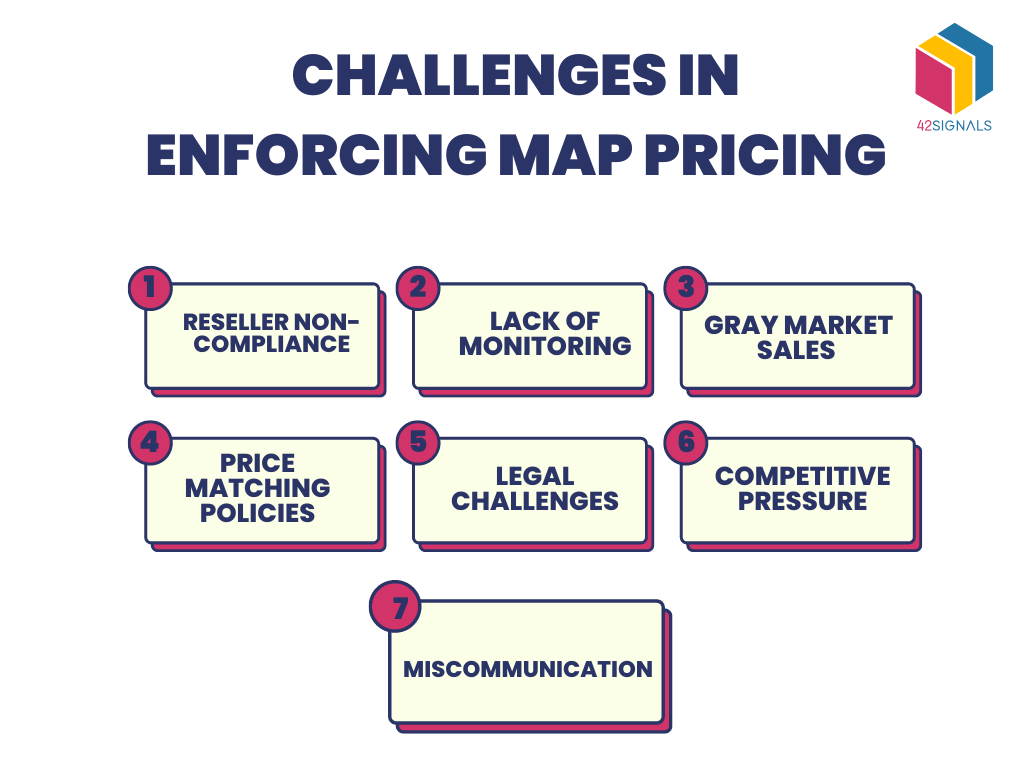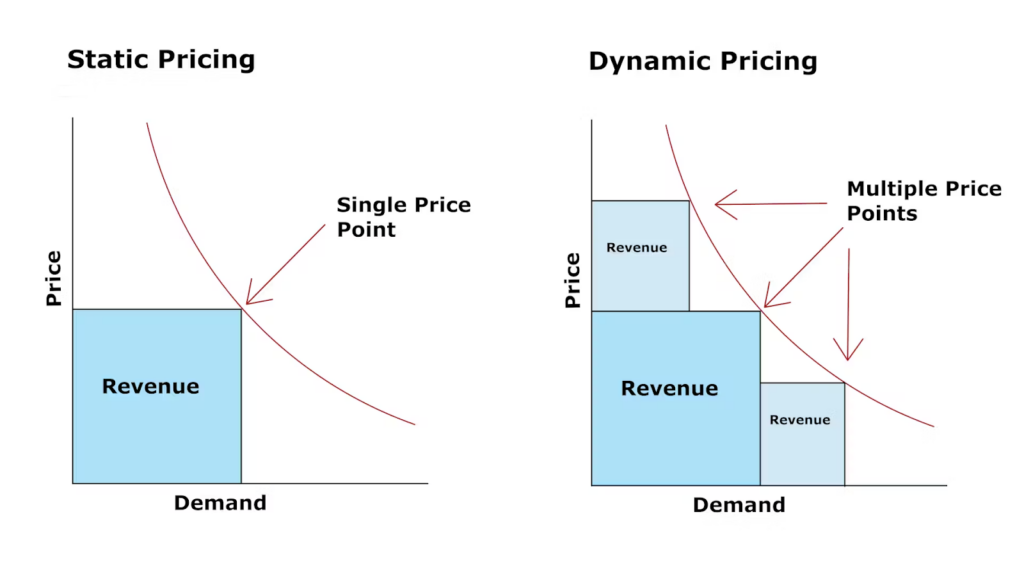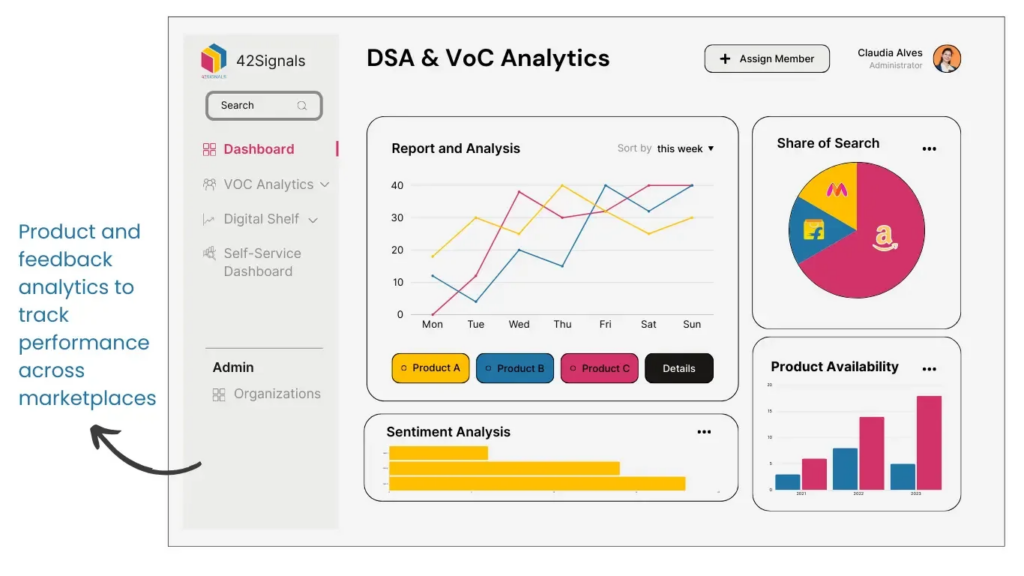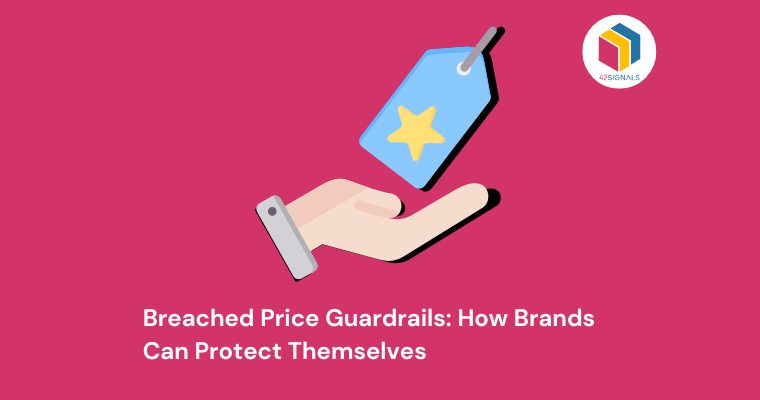Price guardrails, or pricing policies that dictate the minimum or maximum price at which products can be sold, serve as a vital tool for protecting brand equity, preserving market positioning, and ensuring profitability. However, breaches of these price guardrails also known as MAP violations have become increasingly common, especially in the digital space where the proliferation of ecommerce platforms and online retailers makes monitoring prices more challenging than ever.
As brands strive to maintain control over their pricing strategies, the need for robust solutions that combine ecommerce analytics, digital shelf analytics, and an integrated sales methodology has never been more pressing.
What is the Importance of Price Guardrails?

Image Source: Priceva
Price guardrails are designed to create a level playing field among retailers and distributors, ensuring that products are sold within a predefined price range. These guardrails are essential for several reasons:
1. Brand Equity Protection
Consistent pricing across different sales channels helps maintain the perceived value of a brand. When prices vary wildly, consumers may start to question the quality or authenticity of a product.
2. Profitability
MAP policies help protect profit margins by preventing retailers from engaging in aggressive discounting practices that can erode profitability.
3. Channel Relationships
Maintaining price integrity fosters good relationships with retail partners. If one retailer consistently undercuts others, it can lead to friction and potentially damage long-term partnerships.
4. Consumer Trust
Consistent pricing builds consumer trust. When customers see the same price across multiple platforms, they are more likely to believe that the brand is reputable and reliable.
What are the Challenges in Enforcing Price Guardrails?

Navigating MAP Violations
Despite their importance, enforcing MAP policies is easier said than done. The rise of ecommerce has introduced new complexities, as brands now have to monitor a vast array of online retailers, marketplaces, and third-party sellers. Some of the key challenges include:
1. Multiple Sales Channels
Brands today sell through a variety of channels—direct-to-consumer (DTC) websites, online marketplaces like Amazon and eBay, physical retail stores, and even social media platforms. Each channel may have different pricing dynamics, making it difficult to maintain consistent pricing.
2. Third-Party Sellers
Online marketplaces often host third-party sellers who may not adhere to a brand’s pricing policies. These sellers might engage in price cutting to gain a competitive edge, leading to price erosion across the board.
3. Global Marketplaces
With global ecommerce platforms, prices can vary significantly across regions due to currency fluctuations, local taxes, and differing market conditions. Managing price guardrails on a global scale adds another layer of complexity.
4. Dynamic Pricing Models
Some online platforms use algorithms to adjust prices dynamically based on demand, competition, and other factors. This can lead to unintentional breaches of the minimum advertised price, further complicating the enforcement process.

Image Source: Paddle
How Ecommerce Analytics Drives Effective Price Enforcement?
To effectively manage and enforce price guardrails, brands must leverage advanced ecommerce analytics. These tools provide deep insights into pricing trends, competitive positioning, and channel performance, enabling brands to make data-driven decisions.
1. Real-Time Price Monitoring
Ecommerce analytics platforms can monitor prices across different sales channels in real-time. This allows brands to quickly identify any breaches of their MAP policies and take corrective action. For instance, if a third-party seller on Amazon is offering a product below the minimum advertised price (MAP), the brand can be alerted immediately and can work to resolve the issue.
2. Competitor Price Tracking
Understanding how competitors are pricing their products is crucial for maintaining a competitive edge. Ecommerce insights gathered through competitive price tracking can inform pricing strategies and help ensure that policies are not only enforced but also aligned with market realities.
3. Historical Price Analysis
Analyzing historical pricing data can reveal patterns and trends that might indicate potential vulnerabilities in a brand’s pricing strategy. For example, if certain products consistently breach MAP during specific times of the year, it may signal the need for a strategic pricing adjustment.
4. Consumer Price Sensitivity Analysis
By analyzing how consumers respond to price changes, brands can better understand the potential impact of enforcing stricter MAP policies. This analysis can help balance the need to maintain price integrity with the need to stay competitive in the marketplace.
Integrating Digital Shelf Analytics for Comprehensive Price Management
While ecommerce analytics provides a macro-level view of pricing dynamics, digital shelf analytics offers a more granular perspective. Digital shelf analytics tools track how products are displayed, priced, and promoted across various online platforms, providing insights into how these factors impact sales and brand perception.

1. Visibility and Placement
Digital shelf analytics can show where products are positioned on an ecommerce site, how they are ranked, and how often they appear in search results. Poor placement can affect sales and might tempt retailers to lower prices to boost visibility. By understanding these dynamics, brands can work with retailers to optimize product placement without compromising price guardrails.
2. Content Compliance
Consistent product descriptions, images, and pricing are crucial for maintaining brand integrity. Digital shelf analytics can help ensure that product listings across different platforms adhere to the brand’s standards, reducing the risk of price discrepancies caused by incorrect or outdated information.
3. Promotional Effectiveness
Digital shelf analytics can also track the effectiveness of promotional activities. If a promotion leads to a significant breach in minimum advertised prices, brands can quickly identify the cause and adjust their promotional strategies accordingly.
Sales Methodology and Systems for Enforcing MAP Violations
To effectively enforce MAP policies, brands need a cohesive sales methodology that integrates ecommerce analytics, digital shelf analytics, and robust sales systems. This approach ensures that all aspects of the sales process are aligned with the brand’s pricing strategy.
1. Unified Sales Strategy
A unified sales methodology ensures that all sales channels operate under the same pricing guidelines. This means coordinating with retail partners, setting clear expectations, and using sales systems that can enforce these guidelines across the board.
2. Training and Education
Sales teams, both internal and external, should be educated on the importance of MAP policies and how to adhere to them. This includes understanding the impact of pricing on brand equity, profitability, and channel relationships.
3. Sales Systems Integration
Sales systems should be integrated with ecommerce analytics and digital shelf analytics platforms to provide a seamless flow of data. This integration allows for real-time monitoring and enforcement of price guardrails, reducing the likelihood of breaches.
4. Automated Enforcement Mechanisms
Automated systems can help enforce MAP policies by flagging any discrepancies and taking corrective actions, such as issuing warnings to retailers or adjusting prices automatically. This reduces the manual effort required to monitor and enforce pricing policies.
Conclusion
As ecommerce continues to evolve, the importance of strong price management strategies will only grow. With several ecommerce platforms, price breaches can quickly spiral out of control; protecting price guardrails is essential for brands that want to maintain their market position, protect their profit margins, and build long-term consumer trust.
If you are curious to know how such a tool can help your business, schedule a demo with us today.







